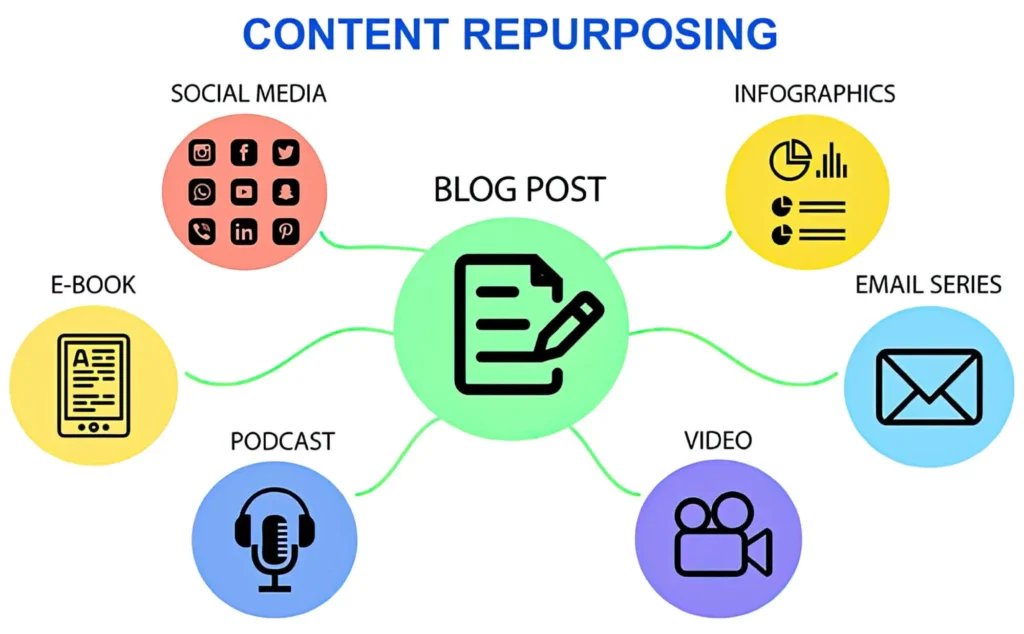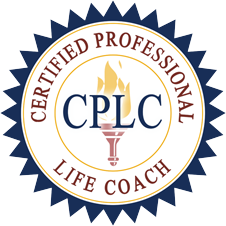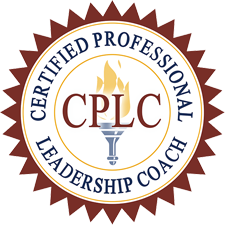
Repurposing content is a smart strategy to maximize your efforts and reach a broader audience. This is part of our communication strategy with our clients. Your content used on various platforms also helps define your leadership style. How you communicate further unleashes the leader in you.
Here are 7 ways you can effectively multipurpose your existing content. I like to start with the audio or video portion. Whether you are hosting a podcast, facilitating a webinar, or conducting a tutorial, the information shared can be repurposed for print platforms. The conversations may lead in a direction you didn’t anticipate, providing more content than expected.
- Webinars: Turn your webinars into recap blog posts with key takeaways. Webinars often cover in-depth topics, and summarizing the main points in a blog post allows you to reach a wider audience. Include relevant screenshots, quotes, and additional context to make the content engaging and informative. Help people visualize the stories you shared by posting a picture to compliment the story. Optimize the blog post for SEO by using appropriate keywords and providing internal links to related content.
- Podcast Episodes: If you’ve written detailed guides or blog posts, consider repurposing them into podcast episodes. Adapt the content for an audio format by adding conversational elements, personal anecdotes, and expert interviews. Podcast content can also be repurposed into a blog. Podcasts allow you to connect with listeners who prefer auditory content and expand your reach to a different audience segment. These podcast platforms can be shared on social media. Like Lunch and Learns, I call podcast Walk and Learns. You can walk, get some exercise, and listen to a great podcast.
- Video Tutorials: This is the reverse of a podcast or video post to written posts. Convert how-to blog posts into video tutorials. Use screen recording software to demonstrate step-by-step processes, share tips, and visually guide your audience. Video tutorials can be uploaded to platforms like YouTube or embedded directly on your website. Remember to include a brief introduction and a call to action at the end, encouraging viewers to explore more resources or subscribe to your channel. When posting on social media, especially LinkedIn, don’t use links that send people off the platforms; post the video directly from LinkedIn.
- Blog Posts: Start by identifying content that has performed well, such as a video, podcast episode, or social media post. Extract the key points, insights, or narratives from the original content to form the core of your blog post. Expand on these points by adding more detail, context, and updated information to enrich the content for readers. Remember to adapt the tone and style to fit the reading format, which often means being more descriptive and explanatory than in visual or audio content. Incorporate relevant keywords to improve SEO and include multimedia elements, like images or infographics, to break up the text and enhance engagement. Also, interject your own personality and leadership style by telling a story. Finally, conclude with a call to action encouraging readers to share their thoughts, explore related content, or take another specific action. You can pose a question for them to answer or think about later. Upload the blog on your website, share it as an article on social media, and consider sending it to a magazine or other publication to publish as an expert in your industry.
- Infographics: Visual learners love graphics. In my work as a coach, I notice that people with specific talents in the Strengths Assessment like strategists and people with input, or learners, love data and statistics. If you have data-rich blog posts or statistical content, consider repurposing them into visually appealing infographics. Condense the information into bite-sized chunks, create eye-catching visuals, and present them in a video.
- E-books: E-Books are great marketing tools. You can easily turn a blog series into an E-book by combining a series of related blog posts into a comprehensive E-Book. An E-Book can be turned into a longer non-fiction book. Arrange the content logically, add additional insights, and create a visually appealing design. E-books can serve as lead magnets, offering value to your audience in exchange for their email addresses. Promote the E-book across your channels and encourage downloads to build your email list.
- Social Media Snippets: Break down longer content into bite-sized pieces for social media platforms. Create attention-grabbing snippets, quotes, or visuals highlighting key takeaways from your blog posts, videos, or other content. As a former reporter, I always look for or listen to soundbites or quotable quotes to share. Audio clips can be edited, and the same can be done with video clips into quick soundbites to share on social media. Share these snippets across social media channels to drive traffic back to the original content. For maximum impact, remember to tailor the format and messaging to each platform (e.g., Instagram, X, LinkedIn).
Remember, repurposing content saves time and allows you to reach different audiences and reinforce your brand message.
Happy repurposing!
Vanessa Denha Garmo is the founder of Epiphany Communications: Coaching & Coaching where she serves as a Leadership Development Coach, Communications Strategist and Content Creator. She is a certified life and leadership coach as well as a certified Strengths Coach and a facilitator with the Achieving Balanced Well-Being program. She works with clients on developing leadership skills, building teams, communications techniques and growth mindset, She hosts the weekday radio program Epiphany on Ave Maria Radio.




